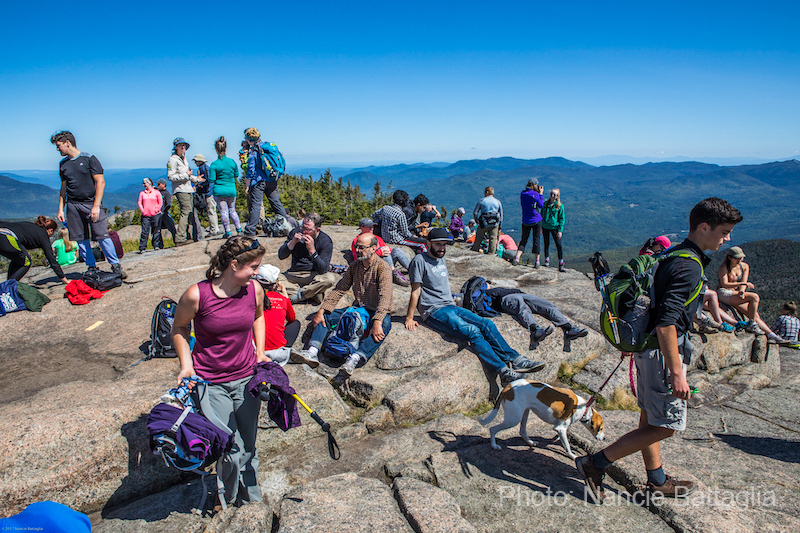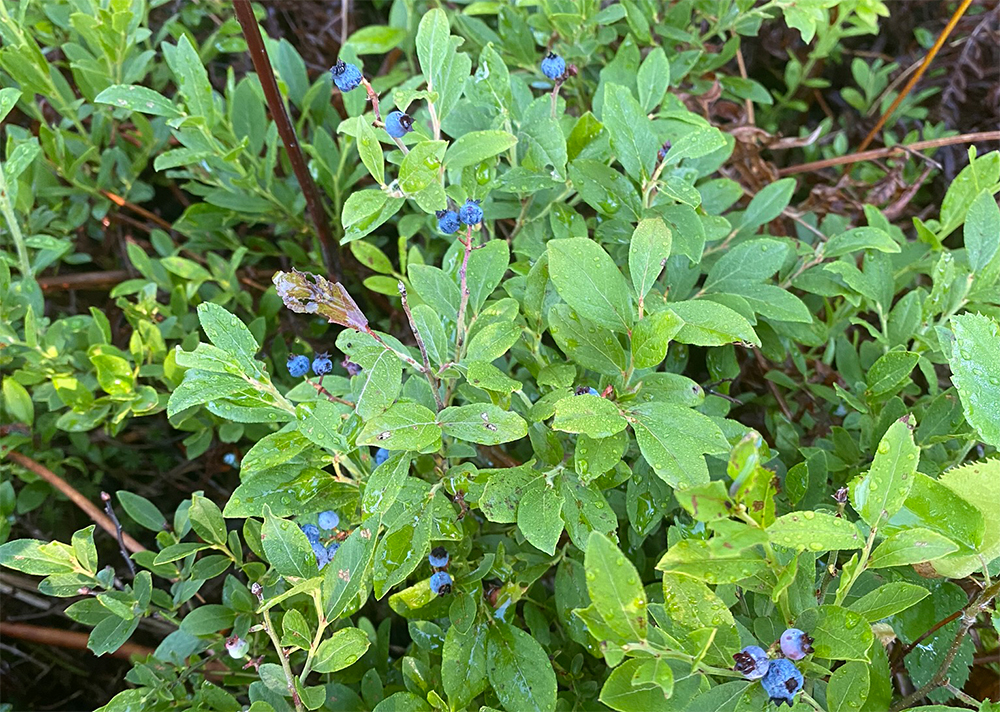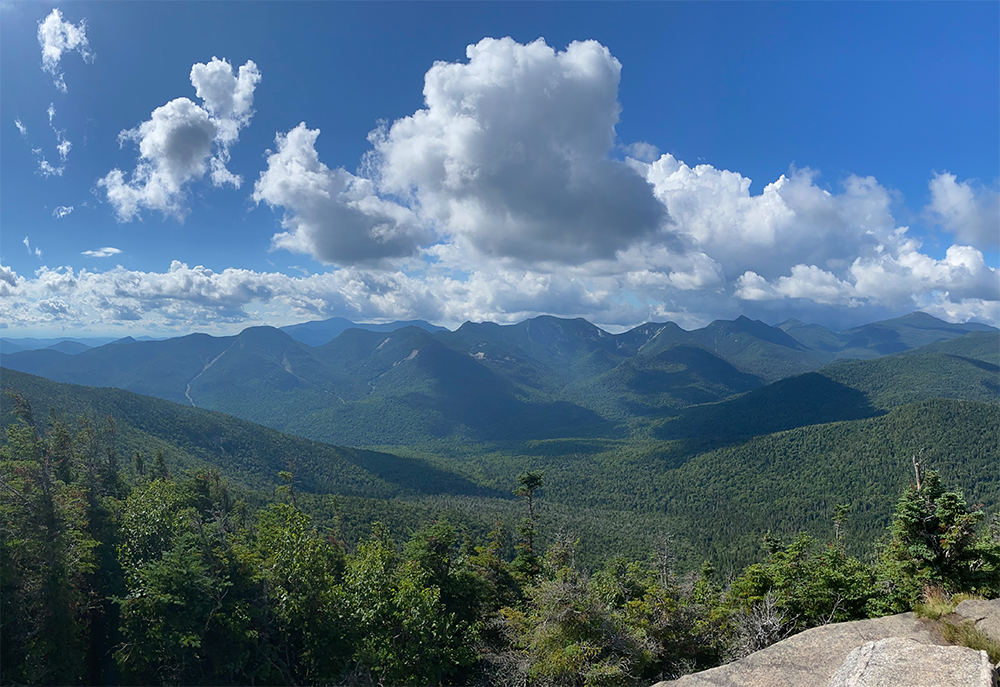
The Art of Slowing Down
By: Caroline Dodd - Adirondack Council’s Seasonal Research Associate
Thursday, October 1, 2020
One of the most salient topics in recent Adirondack news is trail overuse in the High Peaks region, especially with the influx of recreationists during the COVID-19 pandemic. Stewards, land managers, and Forest Rangers alike are overwhelmed with the influx of recreationists who hike unprepared, take on overly ambitious challenges, and either fail to research or choose to simply ignore regulations (read more in a recent blog post “How Much is Too Much?”). Some hikers may be unaware of the research and preparation necessary to safely hike, and rarely have a backup plan for when the trails are too crowded. It is abundantly clear that a comprehensive plan to address overuse is more necessary than ever, and its implementation can’t come soon enough. New York State's The High Peaks Strategic Planning Advisory Group recently released its first set of recommendations to combat overuse, and will continue to develop a final report that will inform management actions. In the meantime, it might be useful to ponder how to reframe the narrative that can sometimes lead to unintentional careless behaviors on the trail, known as “peak-bagging.”

“Peak-Bagging” in the High Peaks
Peak-bagging is the act of climbing mountains and peaks with the explicit goal of reaching the summit, often because that allows the “peak-bagger” to check another peak off a pre-determined list. Hikers may pride themselves in “bagging” a certain number of peaks in a weekend, which in the High Peaks region often brings them a few steps closer to becoming 46ers who have climbed all 46 peaks over 4,000 feet in the Adirondacks. As a trail runner, I sometimes catch myself hiking with this type of mindset - the climb is hard, but the reward is an awesome summit view and the bragging rights from finishing another peak.
The attraction of this type of recreation is obvious – a concrete and measurable reward from each climb in the satisfaction of checking it off a list, as well as the pride of ultimately earning membership in the rapidly growing 46er club. Completing a hiking challenge can be a fulfilling experience and a way to be fully immersed in nature. There is nothing inherently wrong with wanting to complete a hiking challenge, tackle a FKT (fastest known time), or cram several peaks into a short visit. But a look into the history of the 46ers and summitting the High Peaks shows that the intentions of the original 46ers were not to conquer the peaks, but to explore the mountains and determine the best methods to protect them.
Grace Hudowalski, one of the founding leaders of the 46er club and the first woman to become an official 46er, encouraged members of the club to document their experiences on trail, recording ecological observations and personal takeaways. She was a firm believer in the healing and restorative powers of spending time with nature. She and other organizational leaders worked throughout the 20th century on conservation projects to preserve the High Peaks, including summit seeding, educational programming, and trail maintenance. Summitting all of the peaks is a requirement to become a 46er, but it’s important to also remember the emphasis on stewardship and care for the region throughout the history of the challenge. How have we so diverged from these core values to where even some experienced hikers are choosing to ignore regulations, thereby endangering themselves and the surrounding ecosystem?
The valuable work of the 46ers, including trail maintenance, education, and stewardship remains unchanged. But it seems that perhaps the wilderness stewardship ethic, once a tenet of hiking in the High Peaks, is no longer resonating with some hikers in the region. It is unclear whether this stems from a lack of education or inconsistencies between internet resources, or another source, but it is perhaps in part due to the increasing popularity of peak-bagging. The emergence of other hiking challenges, such as the Saranac Lake 6ers, has helped spread some hiker traffic to other peaks, but has also contributed to overuse impacts on these smaller peaks. The rhetoric of “conquering” peaks places emphasis on the quantity, not the quality of outdoor experiences, and perpetuates the idea that we are separate from the natural world, which exists only for our own use. Though less quantifiable than the number of summits, the value of experiencing solitude, conservation, curiosity, and exploration is immensely important and can easily be overlooked by peak-bagging.

Slowing Down, Looking Up
As I hiked Big Slide and Yard mountains recently, I took extra care to observe my surroundings. I got up earlier and hiked more slowly than I normally would, intentionally taking in the sights, sounds, and smells along my journey. I stopped at each lookout, finding unique beauty in every view, and I made sure to look up and down as I climbed, identifying trees and birds along the trail. I took my time studying a map to identify each peak in the Great Range, and wrote my observations in a journal while sitting at Big Slide’s summit. I took my time carefully stepping over blowdown and through mud on the lesser-traveled trail to Yard, and was struck by my complete solitude during the entirety of my journey. Though I don’t know for sure why no one else took that route, whether it was the trail conditions, extra mileage, or unconventional summit, I imagine it is at least in part because Yard is not a High Peak nor part of another hiking challenge. (Actually, Yard is tall enough to be a High Peak, but is not one of the 46ers.)
Hiking to complete a challenge can be an incredibly rewarding experience, and a wonderful way to experience the Adirondacks. But if hikers continue to do so without also contributing to the stewardship and preservation of the Forest Preserve, the ecosystems will suffer and the trails will degrade faster than nature and trail crews can keep up. Without caring about the wilderness' ecosystems, many will fail to take care of these ecosystems.

What You Can Do
There are many ways to help, big and small. Start by making sure you adequately research each hike you plan, regardless of the distance, and come prepared with a backup plan (or two) in case the parking lot at your desired location is full. Learn to recognize the signs of overuse on trails, and show your support for organizations whose work helps address overuse and improve trails. Once it is safe to do so, volunteer your time to help with trail maintenance through the 46ers or the Adirondack Mountain Club. Bring a plastic bag on your hikes and safely pick up any trash you come across. Work to foster a deeper connection to and appreciation for the environment where you are hiking – take a little extra time to notice and identify rocks, birds, and trees. Intentionally spending time and energy to protect our Adirondack Forest Preserve will go a long way in preserving the trails and ecosystems.
The mountains existed long before we had the privilege of hiking them, and they will persevere long after we are gone. But it is up to today’s hikers to determine whether future generations may enjoy the integrity of the unique mountain ecosystems that inspired the first 46ers to hike in the first place.
Caroline Dodd, a Saranac Lake native, is the Adirondack Council’s Seasonal Research Associate. he graduated from Cornell University, where she studied Environmental and Sustainability Sciences with a concentration in Environmental Policy and Governance and a minor in Music. Caroline has worked with The Wild Center’s Youth Climate Program and is also a member of the Lake Placid Climate Smart Communities Task Force, where she is working to conduct an emissions audit to provide recommendations for more sustainable and environmentally sound practices in the Village of Lake Placid.




